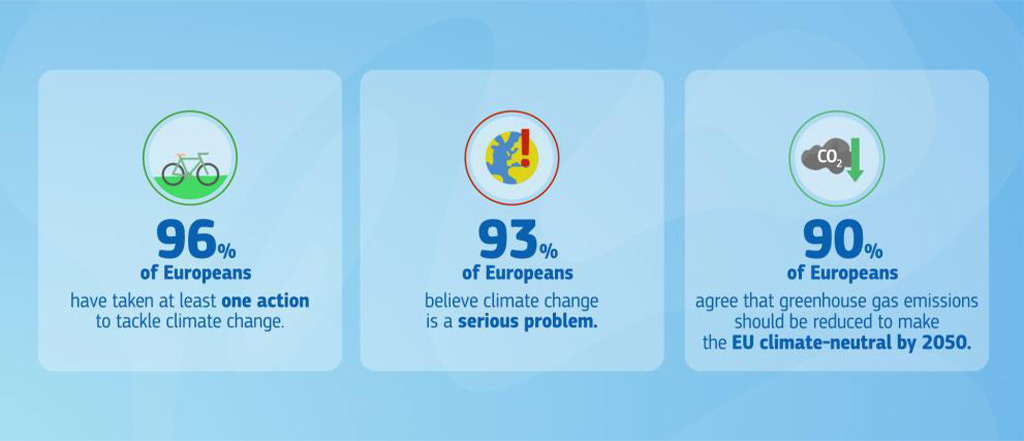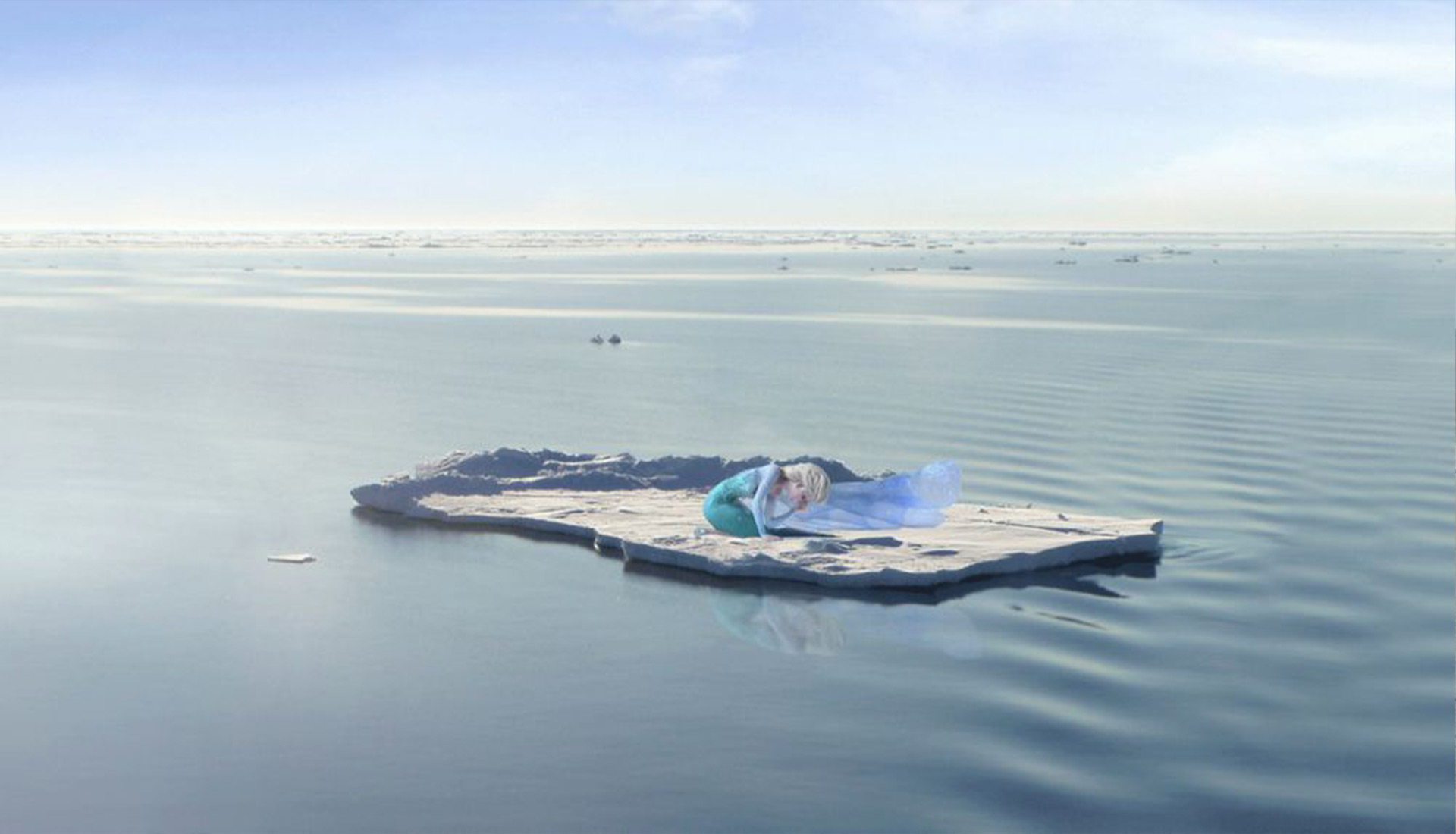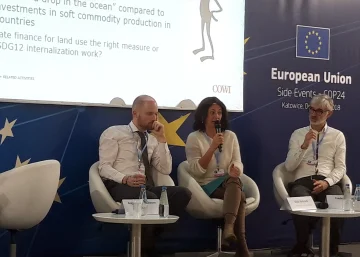Photo Elsa – Disney Frozen series – Jeff Hong
Communicating the climate crisisThe artist Jeff Hong has developed a series ‘Unhappily Ever After’ which combines realistic backgrounds that juxtaposes iconic Disney characters.
Communicating the climate crisis is one of the most complex challenges of our time, as difficult as implementing actions to reduce greenhouse gas emissions.
While there is unequivocal evidence that the Earth is warming at an unprecedented rate and that human activity is the principal cause, public reaction and political actions are slow and not sufficiently fast to address the causes of the climate crisis.
The climate crisis questions the perception of time
There are multiple elements that contribute to this standstill: first of all the climate crisis is not a “problem with a solution” but a complex phenomenon that stretches over space and time. .
Timothy Morton, a philosopher, defined climate change as hyperobject, difficult to understand because it goes beyond our direct experiences.The word hyperobject offers a useful shorthand for why threats like global warming are so difficult to understand or accept: they threaten our survival in ways that defy traditional modes of thinking about reality and humiliate our cognitive powers, a disorienting shift that sends many people reeling into superstition, polarization, and denial.
The climate crisis also affects the perception of time: by changing ecosystems like glaciers that have existed since the appearance of mankind on Earth. Deep time is a concept that goes far beyond the human lifespan.

The climate crisis is difficult to accept as it questions our certainties and beliefs, our lifestyle and it digs deep into our emotions.
Sheer scientific knowledge, albeit needed and essential in communication, is not sufficient because communication works on multiple levels not only on rational and factual elements.
Communication of climate change concerns education, information, activities to convince, warning and mobilization. It is deeply influenced by our beliefs, mindsets, cultural values, life expectancy and wealth, , the perception of the climate crisis around us and how society treats it and not ultimately by the country where we live
Peoples experiences and beliefs can act as a cognitive filter and change how we understand and interact with scientific evidence on the climate crisis
Communicating the climate crisis, its impacts, scientific evidence and the urgency of action has never been an easy task. Climate change is a complex phenomenon, multidisciplinary, with several uncertainties due to the complexity of interactions between the physics of climate, ecosystems and humanity.
Sense and sensibility, fact checking and experience, scientific communication but also visual and artistic performance, together with literature and theatre can enhance communication, making it more powerful and effective and ultimately awaken, after attention, action.
The climate crisis as a global challenge
A European survey carried out in 2021, showed that 93% of citizens now identify climate change as the most serious problem facing the world. 90% of respondents agree that greenhouse gas emissions should be reduced to a minimum while offsetting the remaining emissions, in order to make the EU economy climate-neutral by 2050. Nonetheless there are huge differences in Europe: in Italy only 7% of people consider the climate crisis the most serious problem, against 43% in Sweden.
Another survey conducted by the European Bank of Investment found that most Europeans feel that the dramatic measures taken to fight COVID-19 must also support a green recovery and tackle the climate crisis. The survey found that nearly two-thirds of Europeans want more government measures to help save the climate.
The role of individuals in the climate crisis
A common misconception in the communication is that individuals have a minimal and peripheral role in the climate crisis. While different studies show that the overall impact of individual climate actions can reach up to 25% of global efforts, the awareness of what an individual can do varies. In Europe a vast majority say they are making efforts to reduce their contribution to climate change, but few are making radical lifestyle changes. Giving up cars is the most difficult action for Europeans.The hardest action to take is giving up a car, followed by stop eating meat and stop video streaming.
In the priority of areas of action, energy takes almost all attention. Increasing renewable energy (49%), cleaning up transport (38%) and improving how and when goods are produced (33%) are the most effective actions, according to the EIB Survey. This approach could be influenced either by the great deal of policies and government attention on decarbonising the energy sector, but also by monetary incentives in the energy sector. By contrast actions in a key sector like agriculture and improving how food is produced are considered relevant only by 22% of citizens.
The digitalisation of companies through teleworking and reducing the need for transporting goods are considered a key action only by 13% of citizens.
Climate crisis knowledge: different perspectives
The basic knowledge of a changing climate is available in most European countries through reliable, accurate and sound sources of information, podcasts, blogs.
Nonetheless globally there is a very different perspective: a Finnish citizen has the perception of being very well acknowledged on climate issues, while in Nigeria and Democratic Republic of Congo 32% of citizens have never heard of climate change, despite being impacted by it.
Who are the entities deemed to be responsible for the climate crisis? Answers vary a lot. According to a recent survey of the Yale Climate Change Communication Program, there are very different approaches to responsibilities. In Germany citizens consider the industry and commerce sectors the most responsible, while in Romania half of the citizens think that governments are in charge and responsible for the climate crisis.
Link: EU Survey on climate


